‘Moral Neutrality’ censorship in Emergency Ireland
Published in 20th-century / Contemporary History, Features, Issue 2 (Summer 1996), Volume 4, World War I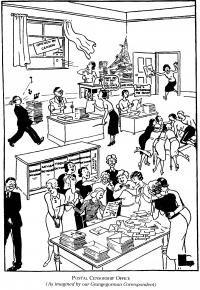
Dublin Opinion, October 1939.
The average Dubliner’, according to an anonymous letter-writer to the Irish Times, commenting on the revelations about the Nazi Holocaust at the end of the Second World War, ‘would not be persuaded even though all the hosts of Hitler’s victims were to rise from the dead; he would only pour himself another drink muttering “British Propaganda”’. Such scepticism in the face of the emerging evidence was common in Ireland, and also in other countries which had not experienced the Nazis at first hand. The sense of incredulity was heightened by the poor reputation which atrocity stories had gained after the First World War; the horror stories about bloodthirsty ‘Huns’ mutilating babies, using bodies to make soap, etc. which featured prominently in Allied propaganda had been exposed as fabrications in the interwar years. In Ireland the credibility gap was widened because of the government’s policy during the war, or the Emergency as it was known, of ruthlessly censoring all reports of cruel or inhuman treatment by the belligerents, and by the continuing insistence in many circles on viewing all oppression through the lens of the British record in Ireland.
Neutrality
Ireland (the twenty-six county state) was neutral during the Second World War. While this policy has subsequently met with much criticism, at the time it was an obvious, pragmatic and, in terms of raison d’état, justifiable policy for a small, defenceless country to pursue. It made sense to want to avoid the horrors of war, the state had no imperialist interests to defend and it was the policy which was least divisive in domestic political terms; less than two decades had passed since the War of Independence against Britain and the Civil War. It also served an important symbolic function as an expression of the young state’s sovereignty and its independence of action, especially from Britain. This symbolic aspect became central and, though the authorities secretly co-operated extensively with the Allies, on a public level Irish neutrality was portrayed as impeccably impartial right to the bitter end. This public picture was exemplified by de Valera’s visit to the German representative in the closing days of the war to express his condolences on behalf of the Irish people on the death of Hitler. During the war the draconian political/security censorship was central to this process.
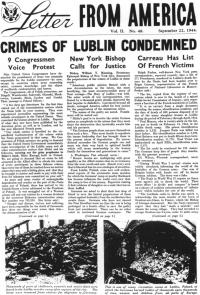 Keeping the temperature down
Keeping the temperature down
The Emergency censorship was operated by civil servants under the Minister for the Co-ordination of Defensive Measures, Frank Aiken. It covered the press and publications of all kinds; film, radio and theatre; postal, telegraphic and telephonic communications. Its object, in Aiken’s phrase, was to ‘keep the temperature down’, both within the state and between Ireland and the belligerents. This meant the suppression of news and views which, in the government’s opinion, could have threatened domestic stability (political, social or economic), encouraged domestic partisans, or have given the belligerents any cause or excuse for questioning the genuineness of Irish neutrality or threatening its existence. This resulted in the severe curtailment of freedom of expression on domestic affairs (government policies, IRA activities, repression, strikes, poverty, etc.), and also on neutrality, the war and the issues at stake. Few escaped the censors’ net, including government ministers and Catholic bishops.
The Irish authorities had failed to develop the state’s defensive capabilities to a level whereby neutrality could be defended militarily. Aiken, however, defined propaganda as ‘one of the most important weapons of war’ and its expression in a neutral country, whether originating there or not, as effectively an act of war. Censorship, by extension, became a central measure in the defence of Irish neutrality. Because Ireland relied almost exclusively on Allied sources, particularly the British news agencies, for its news of the war, all war news had to be ‘neutralised’ (its intrinsic propagandist content, or intent, removed). This was not something which other neutrals such as Sweden and Switzerland did to anything like the same extent. In the first place, the media in those countries did not have to rely on belligerent sources alone for their war coverage because, unlike Ireland, they had their own war correspondents and news agencies which could provide them with independent reports and interpretations of events. More generally, these states had taken sufficient measures for the military defence of their neutrality and did not, as the Irish did, regard the creation of ‘a truly neutral outlook’ among their peoples, or a so-called ‘moral neutrality’, as either necessary or desirable.
The Irish authorities refused to allow the war to be placed in a moral framework. Neither side was any better or worse than the other; this was a conflict between powers pursuing their own materialist interests, an ‘ungodly struggle’ which traditionally ‘spiritual’ Ireland would stand not only outside of but above. Unlike other neutrals, a sense of moral superiority became attached to the Irish policy and this demanded that both sides be morally equated, that information revealing one side to be more cruel, inhuman, etc. than the other be kept from the Irish public’s view. Besides, how could anyone, even the Nazis or the Japanese, behave more immorally than perfidious Albion or Godless Russia? (Even the term ‘Nazi’ itself was banned, as the official position of the German legation was that its use outside Germany had an adverse connotation!).
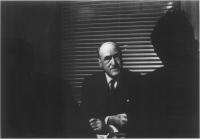
Frank Aiken, Minister for the Co-ordination of Defensive Measures 1939-45(Irish Times)
Atrocity stories
‘While none are more easily shocked at human suffering as the Irish’, wrote an Irish journalist in a dispatch abroad heavily influenced by the censors, ‘they do not want to have their own experiences recalled and are determined to adhere to their policy of no publication of details of horror stories until the end of hostilities.’ Thomas J. Coyne, the Controller of Censorship, declared that ‘the publication of atrocity stories, whether true or false, can do this country no good and may do it much harm’. They would have given rise to ‘sharp controversy’ and, according to the editor of the Irish Press, had ‘no other value than to inflame passions’. While the business of ‘atrocity mongering’ was notoriously corrupt, the levels of systematic slaughter revealed in the closing
stages of the war in Europe, and verified by independent sources, made the censorship policy of unbending impartiality difficult to justify, except within the narrow confines of the system’s own internal logic.
Reports of persecution and cruelty from across German-occupied Europe provided much work for the censors from the first stories of Gestapo
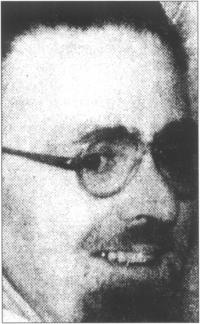
Thomas J. Coyne, Assistant Controller(1939-41)and Controller of censorship (1941-45)
executions of ‘mental defectives’ and mass executions of Polish Jews which were censored from early 1941 onwards. By the autumn of that year there were daily reports of German atrocities, perpetrated across the continent. In general, it was policy to remove all details of specific atrocities and to consider only general allegations contained in official statements or communiqués for publication.
‘…but the Russians were as bad’
Atrocity stories began to arrive on the wires and into the censors in even larger numbers from early 1943. The majority of these reports concerned Nazi outrages in Eastern Europe where the ‘final solution’ was well under way. This continued to be the case but, ironically, it was an atrocity story from a German source which provided the censors with one of their largest single workloads in this area. In April 1943 the Germans found mass graves containing the bodies of an estimated twelve thousand Polish officers in Katyn Forest near the Soviet city of Smolensk. They had evidently been murdered by the Soviets, and the Germans, recognising its propaganda value, immediately announced their discovery to the world. All details were prohibited from publication in Ireland; the most that was allowed was reference to a German broadcast which alleged the discovery of the bodies of an unspecified number of Polish officers, said to have been murdered. Suppressed items included an announcement of a requiem mass being offered for the dead soldiers. In an interview in 1979 Aiken cited the Katyn atrocity in an implicit retrospective justification for his wartime policy: ‘What was going on in the camps was pretty well known to us early on, but the Russians were as bad—you only have to look at what happened in Katyn forest. There are photographs to prove that.’ Gerald Boland, the wartime Minister for Justice, made a similar point, referring to those responsible for Katyn (and other Allied atrocities such as Dresden, Hiroshima and Nagasaki) ‘having the cheek to try anyone for war crimes’. The point is valid, but revealed a continuing refusal to acknowledge the systematic genocidal nature of the Nazi project or the possibility that there was a qualitative difference in the overall behaviour of both sides.
Aiken did indeed know what was happening in the camps, as he said, and outside, as details passed through his organisation in increasing volume but were kept from the pages of the Irish press. Censorship policy remained rigid as the numbers of reported dead rose from hundreds to thousands to millions. Even official communiqués and statements from the likes of Roosevelt and Eden were shorn of all relevant detail and left as general condemnations of unspecified brutalities. Buchenwald, Belsen, Lublin, Dachau, Auschwitz-Birkenau—none could be allowed disturb the equanimity of the neutral Irish mind.
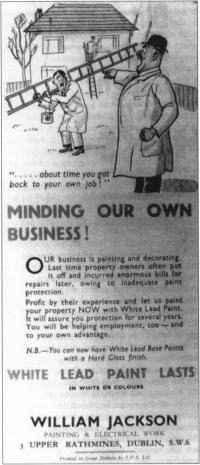
An advertising leaflet seized by Gardai in May 1941 on the instructions of the censor.
The Far East
Atrocity stories did not, of course, emanate only from Europe. The war in the Pacific generated a whole spate of such stories, as both the Japanese and the Americans and Australians, hyped up by racist propaganda which dehumanised their respective enemies, perpetrated appalling crimes. Both sides reported only the atrocities committed by their opponents, and the Allied media domination of Ireland meant that the vast majority of censored stories related to Japanese atrocities. An added dimension of this war from an Irish perspective was its impact on a large number of non–combatant Irish nationals, in the form of the many Catholic missionaries active in the area. Missionary magazines became a target of the censors; the editor of Ricci Mission News, for example, was told that ‘the censorship does not allow hospitals, still less children’s hospitals, to be shelled or bombed in our press by either side whatever the facts may be’. Irish Jesuit Publications were informed of the desire to ‘prevent the publication of matter which might make it more difficult to secure favourable or even fair treatment of our nationals…’
In the early months of 1945 the treatment of Irish nationals by the Japanese was a regular feature in reports from this theatre of the war. However, the fact that the victims of atrocities were Irish, and religious Irish at that, did not in any way alter the strict application of censorship policy. In February and March 1945, for example, the censors suppressed stories submitted by the Cork Examiner and the Free Press, Wexford dealing with the slaughter by the Japanese of over sixty people, including students, refugees, priests and brothers (a number of whom were Irish) in the De la Salle College in Manila. The stopped Examiner story related the experiences of Revd. Francis Cosgrove, one of the eight survivors, who had lived hidden beneath an altar for a week, existing on the water from flower vases and Holy Communion wafers. An Irish Press story was treated thus (words deleted by the censor underlined):
Priests and Nuns at Mandalay Rescued—Priests, nuns and orphan children housed in a leper colony in Mandalay were safely evacuated after Japanese shellfire had killed one priest and injured four others…They had been congregated in Mandalay by order of the Japanese.
On 30 March 1945 the treatment of a report on the killing of four Irish priests in Manila provoked a strong protest from the American representative David Gray and created some controversy about Irish policy towards atrocity stories. The priests, from the Maynooth Mission to China, had, according to a US Office of War Information (OWI)-inspired report, been put inside a house and deliberately burnt to death by the Japanese. The report in the Irish papers merely announced the deaths ‘during recent fighting in Manila’, giving the impression that the deaths could equally have resulted from Japanese or US action or indifference to the safety of non-combatants. Gray wrote to the Irish Press and Irish Independent, quoting the OWI telegram giving details of the atrocity. This section of the letter was deleted before publication. This double censorship provoked an amount of publicity. Associated Press carried the story on their wires and both the New York Times and the New York Herald Tribune gave prominence to it; the latter used it to imply that Irish neutrality was biased towards the Axis powers.
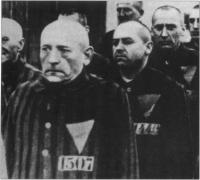
German concentration camp,1940.
Radio Éireann, the Irish broadcasting station, was state-run and so was kept strictly within the confines defined for the press. Film censorship was even stricter than that of the press; virtually no reference to the war was allowed and special newsreels, with no war news, had to be made for the Irish market. (‘Mr. de Valera’, according to the Daily Mail in 1942, ‘insists that Irishmen shall be neutral in thought, word and deed—and also neutral at the pictures.’) Theatre did not legally come within the remit of the Emergency censors, yet they still controlled productions through various indirect methods. In 1943 the German representative Eduard Hempel complained to the government about an upcoming production in Dublin’s Peacock Theatre called The Refugee. The play featured a Jewish refugee from German persecution in Austria and contained several references to concentration camps. The Controller of Censorship suggested a number of amendments to the author which would render the play unobjectionable. In the eventual production the hero had become simply a refugee from Hungary while references to the camps were left out completely. Special Branch detectives attended the opening night in April 1943 to ensure that the play had been suitably neutralised.
Reactions
Exactly two years later the awful truth of those camps was being uncovered and revealed. An Irish journalist, in a piece for one of the news agencies about the first reports from Buchenwald in April 1945, wrote that ‘…the people here find it difficult to believe that atrocities such as those alleged in radio broadcasts could possibly have happened’. The Irish were not alone in this reaction. People everywhere who had not directly experienced the Nazis found it hard to comprehend the scale of the horror and the fact that it was the result of a deliberate and systematic policy. There was widespread disbelief in Britain and America at the reports from the first camps to be liberated (by the Red Army); eye-witness reports and photographs were dismissed as Russian propaganda. In Ireland the villain of the piece was always more likely to be British. Correspondence in Irish newspapers in the weeks following the lifting of the censorship on 11 May gives a flavour of the disbelief felt about the pictures and reports of Nazi atrocities. Some correspondents articulated the common view that such reports were the inventions of British propagandists. Such attitudes were not (in most cases) the product of pro–Nazi sympathy, but of the narrow mind–set which clung to the myth that British inequity and Irish suffering were somehow unique. The censorship contributed to, and also, in its policies, partly reflected this view.
One writer to a Kilkenny paper described the newsreel footage from Belsen as ‘all propaganda’ and alleged that the British had used starving Indians to impersonate the inmates. A Dublin doctor assured Brian Inglis of the Irish Times that all the evidence, descriptions and pictures from Belsen could quite simply be accounted for by a typhoid epidemic. Another correspondent, unwilling to face up to the uncensored reality, asked ‘Why drag up all these unpleasant things? It’s so bad for the children, life is sad enough without this beastliness’. Many Irish people did avert their gaze, for many different reasons, but so too, in the preceding years, did many across Europe who were far closer to the reality, and with far more serious consequences.
The censors claimed that the Irish people had been kept ‘fully informed’ of atrocities by means of belligerent broadcasts, the English press and the Letter from America, the bulletin distributed by the US legation in Dublin. These media, however, reached a limited audience, preached largely to the converted and carried the stamp of ‘propaganda’. For the majority such stories would have lacked credibility until carried in the neutral press or on neutral radio. Frank Aiken and his censors ensured that this did not happen in the dubious belief that ignorance was the best policy when it came to maintaining a neutral world-view, if such a thing can be said to exist.
Donal Ó Drisceoil lectures in history at University College Cork.
Further reading
D. Ó Drisceoil, Censorship in Ireland 1939-1945: Neutrality, Politics and Society (Cork 1996).
R. Fisk, In Time of War: Ireland, Ulster and the price of neutrality 1939-45 (London 1983, Dublin 1995).
















